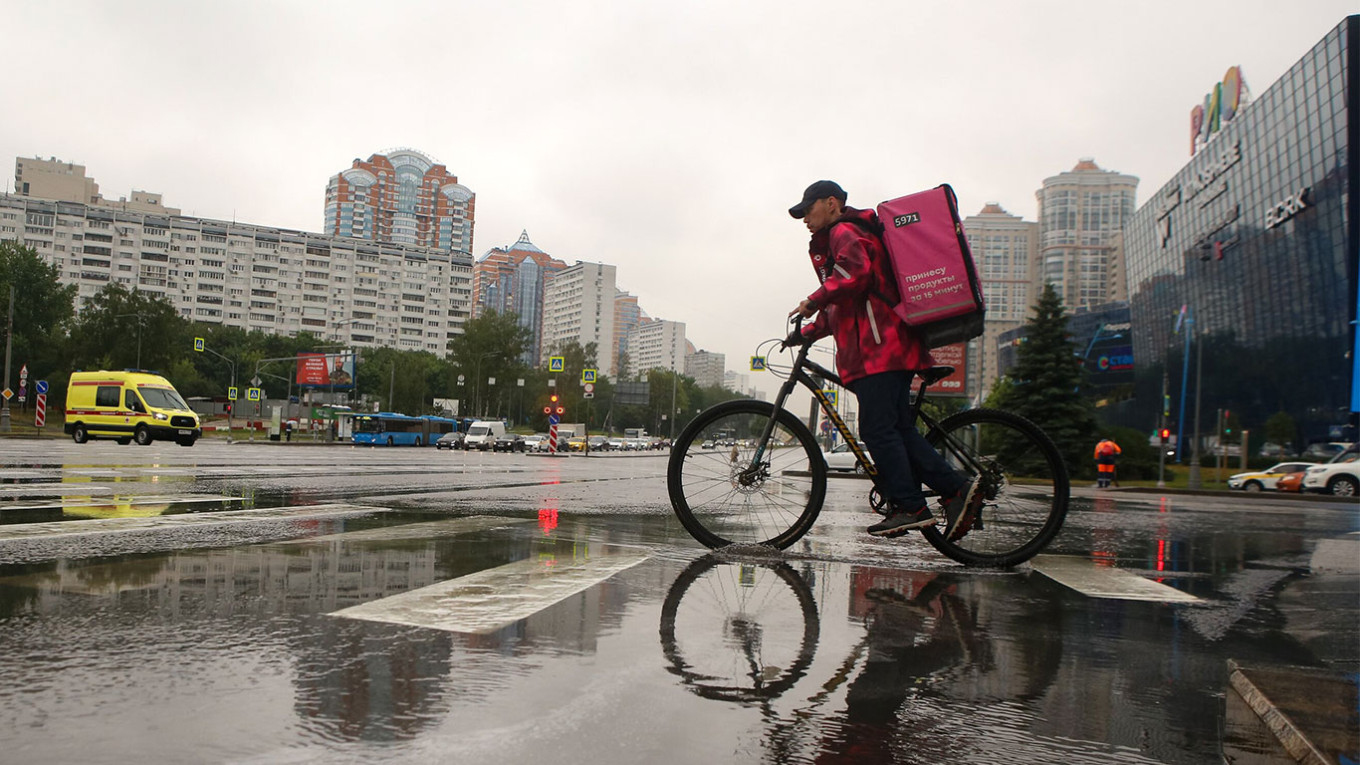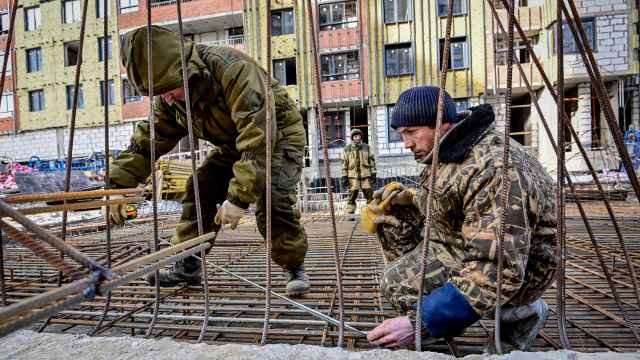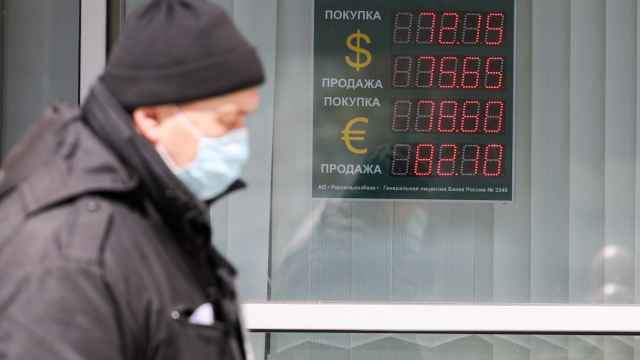As the Russian ruble has slumped to post-invasion lows in recent months, talk of a possible exodus among millions of Central Asian labor migrants has bubbled to the surface.
Federal and local news channels have been awash with stories about how hundreds of thousands could leave Russia altogether, as the value of their salary has fallen and the amount they have to send home to families in the likes of Uzbekistan, Tajikistan and Kyrgyzstan dwindles by the month.
“The fall in the value of the ruble affects the attractiveness of the Russian labor market,” Bakhrom Islamov, head of the Uzbekistan diaspora association in Moscow, told The Moscow Times. In a poll he conducted in August of more than 20,000 Uzbek workers, half of respondents said they were considering leaving Russia after the ruble fell to 100 against the U.S. dollar.
Cheap and plentiful, workers from Central Asia are the lifeblood of many sectors of the Russian economy — from couriers and taxi drivers to construction workers and fruit pickers. An exodus would be felt sharply across the country, amplifying an already painful labor shortage playing out across the Russian economy.
Since the Kremlin announced a “partial mobilization” last September, calling up more than 300,000 young men to fight in Ukraine, and redirected billions of dollars to produce more guns, tanks and missiles for its invasion, the non-military sectors of Russia’s economy have been starved of workers.
A recent survey of firms by the Gaidar Institute found 42% of companies said they faced labor shortages — the highest ever recorded since researchers started collecting data in 1996. The official unemployment rate is at a record low of just 3%. Russia’s construction industry, for instance, has a reported deficit of 200,000 workers.
Moreover, Russia’s long-term demographic crisis is so severe that experts at Moscow’s Higher School of Economics (HSE) say the country needs to attract anywhere between 400,000 to 1.1 million migrants every year just to keep working-age population numbers stable in the long term.
Pinning down the extent of any exodus among labor migrants as a result of the currency crisis is extremely tricky.
“There seems to be an outflow of migrants. However, it is very difficult to assess because of the lack of reliable migration statistics,” said economist Nikolai Kulbaka.
The only regularly published figures on migration are entry and exit data collected by the country’s border service, but they don’t distinguish for repeat border crossings, people returning home for short trips, those who leave the country on visa runs or seasonal workers who rotate in and out of the country, said economist Vladimir Milov, a former government official turned opposition figure. Moreover, year-on-year comparisons are still distorted because of coronavirus-related travel restrictions and related visa amnesties.
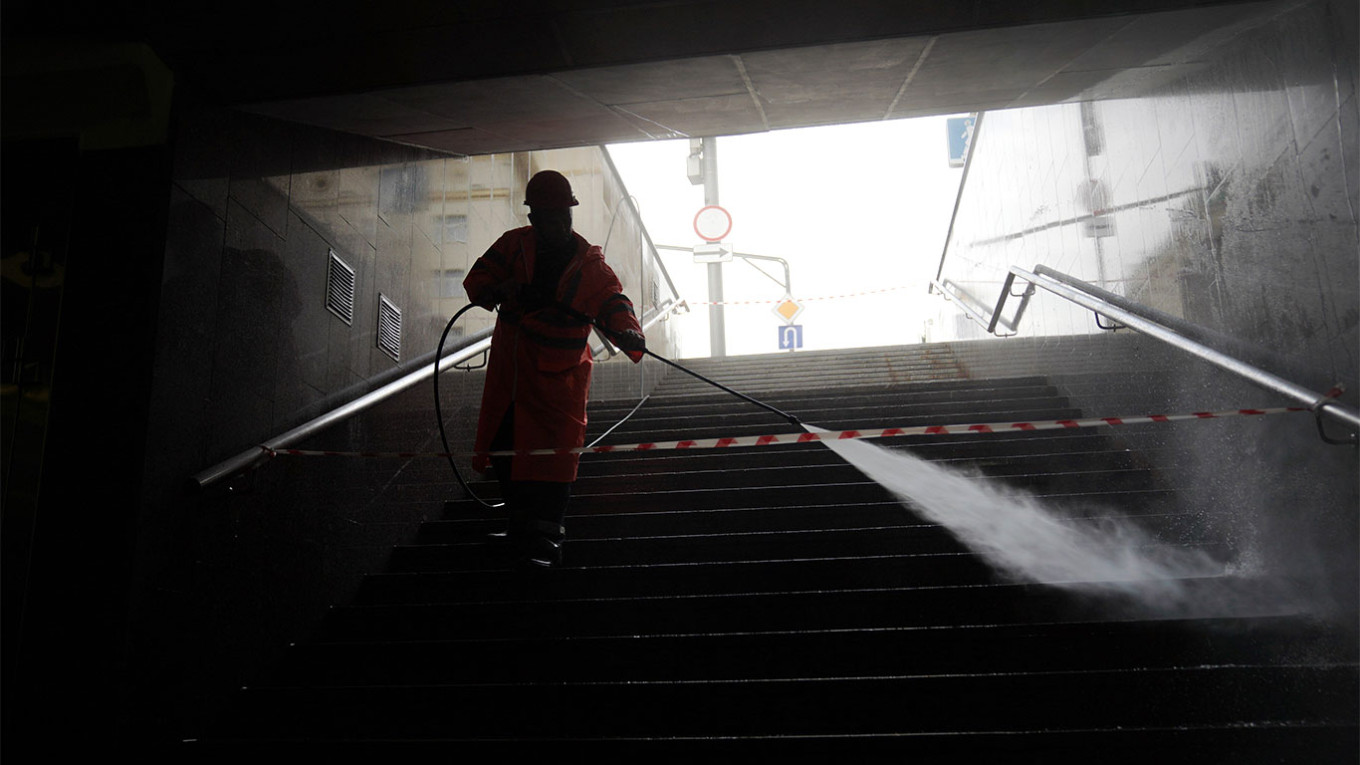
Most official estimates place the overall number of labor migrants in Russia at slightly above 3 million — or around 4-5% of the country’s entire workforce.
But the true number of foreign workers is likely much higher, given the scale of illegal immigration — in the hundreds of thousands according to the Interior Ministry — as well as widespread off-the-books employment in low-wage sectors, and the fact that hundreds of thousands of people who originally came to Russia as labor migrants have acquired citizenship or permanent residence in recent years.
Reports of hundreds of thousands heading for the exit are likely overblown. Denis Berdakov, a political scientist who focuses on migration issues, says perhaps 5-7% of skilled migrant workers — which make up a small minority — could have left as a result of the weaker ruble.
Russia is partially protected from a mass exodus as conditions for many in Central Asia are still worse than in Russia, particularly for those without advanced qualifications or skills.
“There’s just not so many opportunities in Central Asia itself … There’s no thriving labor market in Central Asia. Russia is essentially the only place they can enter to find work,” said Milov.
“For those who come from the regions to Central Asian capitals, life in Dushanbe, Bishkek or Tashkent is almost as expensive as Moscow,” said Berdakov. Those who are leaving Russia are mainly driven by non-economic factors, such as dual citizens who are liable to be drafted into Russia’s Armed Forces.
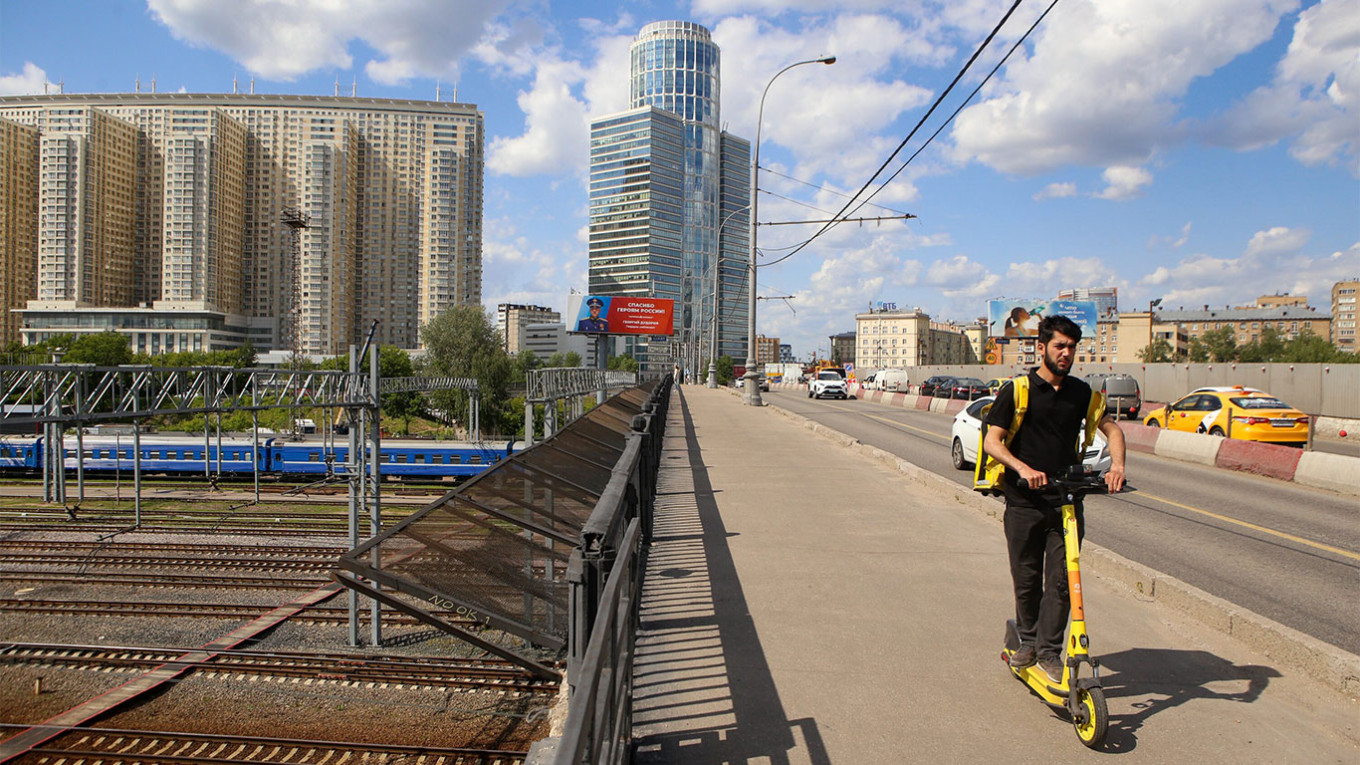
“In principle, if there is no specific threat of being called to the draft office and they don’t have Russian citizenship, unskilled workers are still choosing to move to Russia,” he said.
Demographics in Central Asia also speak against the flow of migrants drying up. In Uzbekistan alone, an extra 400,000 young people enter the labor market every single year — more than the domestic economy can provide jobs for, said Islamov.
Instead of an overall plunge in migration, Islamov sees a shift in the kinds of workers that will be looking to move to Russia — with more skilled workers, like engineers and experienced construction workers, looking for opportunities in countries as diverse as Kazakhstan, Japan, Poland and the United Kingdom.
With Russia’s economy already facing record labor shortages, some corners of the Russian government recognize the potential damage that a shift in migration dynamics could cause.
Economy Minister Maxim Reshetnikov said the country had to become much more welcoming to immigrants.
“We must work more actively to attract migrants to the economy. Central Asia is right next to us — an actively growing region with a lot of workers,” the state-run TASS news agency quoted him as saying at a policy forum earlier in September.
But migrant rights groups say those words are not backed up by actions, pointing to a general anti-migrant mood among many parts of Russian society and strict enforcement actions by the country’s security services in the form of raids on workplaces and accommodation, frequent document checks by police on the streets of major cities, and even draft summons being issued to migrant workers.
Instead of seeing a short-term exodus, experts point to a waning in Russia’s appeal as a destination for migrants, particularly skilled workers, as just the latest constraint on Russia’s long-term economic potential.
“There is still a flow of migrants into Russia. However, with every month the numbers coming from Central Asia grow lower. If the situation doesn’t change, then it could cost Russia up to 0.5 percentage points of annual GDP,” said Kulbaka.
With independent economists estimating Russia’s long-term growth potential at around 1% a year, even a mild slowdown could tip the economy into the red.
“I see this going in waves, more or less,” said Milov. “It’s really hard to measure, but generally the environment in Russia for migrants has become much less comfortable and much more hostile, so many people should probably be considering leaving.”
A Message from The Moscow Times:
Dear readers,
We are facing unprecedented challenges. Russia's Prosecutor General's Office has designated The Moscow Times as an "undesirable" organization, criminalizing our work and putting our staff at risk of prosecution. This follows our earlier unjust labeling as a "foreign agent."
These actions are direct attempts to silence independent journalism in Russia. The authorities claim our work "discredits the decisions of the Russian leadership." We see things differently: we strive to provide accurate, unbiased reporting on Russia.
We, the journalists of The Moscow Times, refuse to be silenced. But to continue our work, we need your help.
Your support, no matter how small, makes a world of difference. If you can, please support us monthly starting from just $2. It's quick to set up, and every contribution makes a significant impact.
By supporting The Moscow Times, you're defending open, independent journalism in the face of repression. Thank you for standing with us.
Remind me later.



